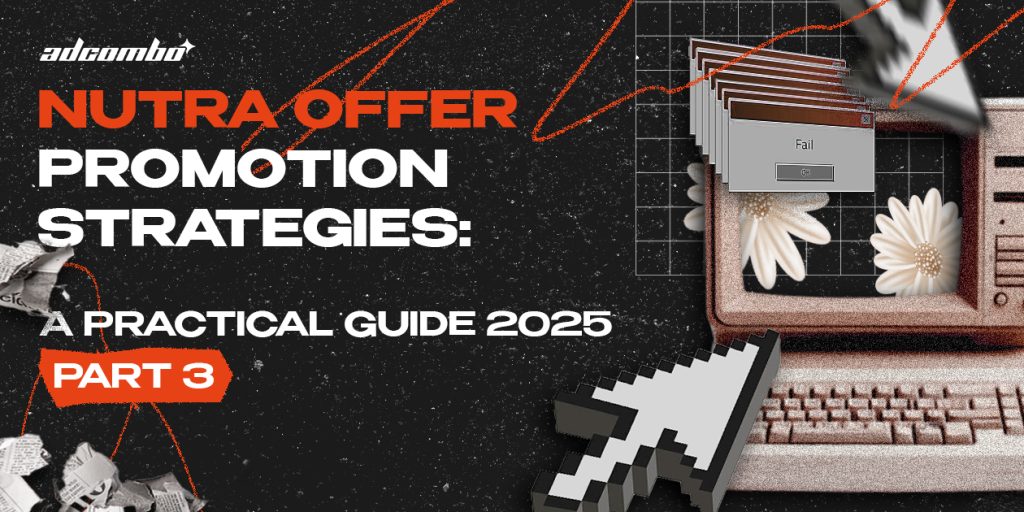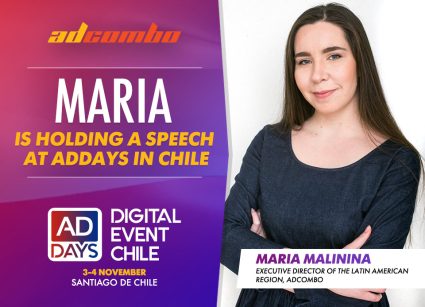-
Nutra Offer Promotion Strategies in 2025: Play “Unconventionally” | Part 310.7.2025Reading Time: 5 minutes

When Facebook blocks even herbal blood pressure teas and users skip the “life story” by slide two, you only have one option left: get creative and think outside the box.
In this final part of our series, we’ll break down three more strategies that work by leveraging curiosity, metaphor, and visual storytelling:
- Teaser strategy
- Associative strategy
- Graphic strategy
Let’s dive in and figure out what baking soda and a banana have in common ⬇️
Teaser Strategy
The teaser (a.k.a. clickbait) strategy is a legacy of classic teaser ad networks, now used across FB and other channels. Its goal is high CTR and cheap clicks through intrigue, shock, or novelty. The message is rarely direct — instead, it hints, shows something unrelated to the product, and sparks curiosity.
Where and when it works best
This strategy works where you need a wide top-of-funnel reach — grabbing as many cheap clicks as possible, then filtering on the pre-lander. Teasers typically deliver the highest CTR and lowest CPC, which is great, but purchase conversion can be average: some people click out of pure curiosity and bounce once they realize it’s a product.
Teasers are commonly used in teaser, push, and native ad formats, where there’s more creative freedom than in traditional ad systems. Still, even there, blatant disconnects between teaser and product reduce trust.
Ethics tip: If a teaser promises a miracle method unrelated to the actual product, that’s a problem. Aim for a teaser that overlaps with your product theme. If it’s a herbal product, the teaser should involve herbs; if it’s a cream, maybe use a sauna or compress angle. This makes the idea of “method + product” more believable.
Creative tips
- Test multiple ideas. Even within one offer, test different curiosity hooks. One GEO might love lemons, another responds to eggs or baking soda. Always run several teaser variations (e.g. 5 different objects/methods) and check CTR/CR.
- Link teaser to pre-lander. If the teaser is “banana peel cures fungus,” the pre-lander should genuinely start with banana peel and folk remedies — then pivot to the product.
- Use micro-elements. Add tiny visual cues to the banner: red arrow, question mark, blurred “secret” text. These boost clickability.
- Use local flavor. Adapt visuals by country: turmeric/cardamom in India, ginseng in China, garlic/honey/St. John’s wort in Eastern Europe. These feel more relatable.
Trends and limitations
Teasers are cheap but bring lower-quality leads. In 2025, many say “clickbait is dead” — users are savvier. But it hasn’t died, it’s just evolved. Top affiliates mix teaser strategy with other approaches for best results.
Associative Strategy
Use this strategy when you can’t (legally or ethically) show the problem/result directly. Instead, you rely on metaphor and symbolism. Creatives display objects or scenes that subtly suggest the product’s effects, prompting users to interpret the message. Common in adult nutra: products for libido, size, potency.
💡 Creatives sourced from TyverSpy.
Want to test the service for free? Message @Misha_Tyver on Telegram with the phrase ADCOMBO TRIAL. And when you make your first payment, get 20% off with the promo code ADCOMBO.Often, the ad doesn’t look like an ad at all — more like a meme or puzzle. These creatives slip past moderation while engaging the viewer emotionally as they “decode” the metaphor.
How to use it
Sex-related themes are banned in many ad platforms. Associative imagery helps bypass moderation. A banana alone won’t get banned — it’s just a banana. Still, modern AI moderation is getting smarter with context.
Make your banana “make sense”: if you’re promoting men’s vitamins, the banana can represent a potassium-rich diet. Some users won’t get it — that’s fine, they’re not your audience.
Creative tips
- Go for humor and wit. Use slightly funny but not offensive visuals. Example: two bees, one with a massive stinger = cheeky hint at enhancement product.
- Find new metaphors. Bananas and peppers are overused. Try something fresh. For example, a bent nail turning straight with the caption: “Back to steel again.”
- Pre-lander matters. After the click, explain the metaphor. E.g., an article: “Why bananas boost men’s strength: potassium, etc. But it’s not enough — that’s why we made this supplement.”
Trends and relevance
This strategy is timeless, as long as ad restrictions on intimate topics exist. The key is balance and respect — keep it smart, not vulgar.
Graphic Strategy
The graphic strategy involves using illustrations, comics, diagrams, or infographics instead of real-life photos. This approach helps clearly and visually explain the core idea of the offer — for example, showing how a supplement cleans arteries or how weight is reduced using an infographic.
💡 Creatives sourced from TyverSpy.
Check out service updates in the channel @tyver_enWhere and Why It Works
Graphics can be used across almost all nutra verticals and pair well with other strategies, especially when something needs to be explained or visually softened. It works best when the graphics enhance the offer’s clarity — showing how it works, comparing results, or visualizing action.
Moderation algorithms tend to be more tolerant toward illustrations. Even if the drawing shows something unpleasant, it’s not treated as real shock content.
Limits and Trends
Graphic creatives used to be rare — now, they’re more common. Today, graphics need to improve the clarity of the offer or help with moderation. A random sketch of a flower won’t sell anti-aging cream, but an illustrated process of skin cell rejuvenation just might. Especially now that AI can draw anything — or even animate it — it’s worth testing illustrated versions of concepts that previously worked with photos. That’s how you find fresh winning angles.
Conclusion
Perception-based approaches may not be a magic “money” button, but they open up new creative possibilities. All three options require media buyers to understand their audience and connect the approach with a well-matched pre-lander.
If you haven’t read the previous articles — here’s [Part 1] and [Part 2]. These strategies aren’t mutually exclusive — in fact, the best results often come from combining them. Don’t be afraid to experiment and mix things up — that’s how you’ll find fresh angles that outperform the competition.
And one last thing — keep an eye on trends. The nutra vertical is constantly evolving, but the core principles remain the same: trigger emotion, show results, and build trust. Use the strategies above as a foundation and adapt them to your own style.
Wishing you strong campaigns and high conversions! 💓



Leave your comment